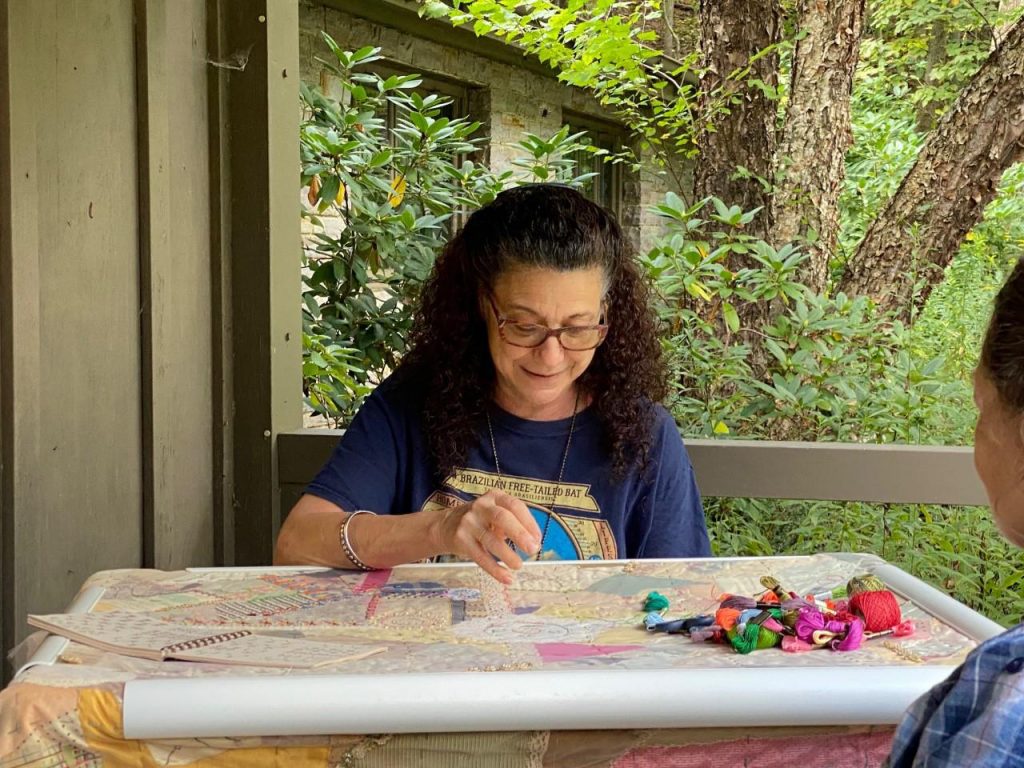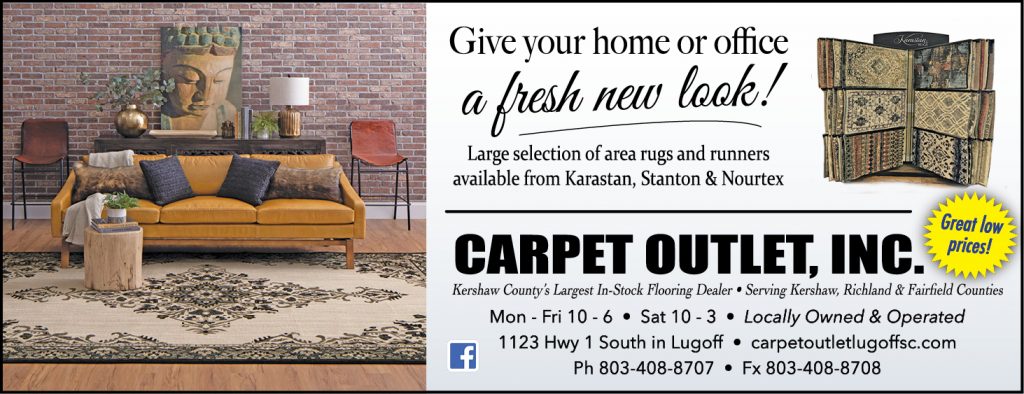
BLYTHEWOOD – A lot about Susan Lenz’s artistic concepts and materials are grounded in giving second life to old things. Initially, this meant repurposing fabric and fiber in her artwork.
During the pandemic, however, the Columbia artist began another form of repurposing: stitching found objects into old quilts in concentric circles. The result is a series of mixed-media Mandalas which contain everything from old toys and game pieces to fax phones and circuit boards.
That series debuted last summer at the Philadelphia Museum of Art Craft Show, then went to the Smithsonian Craft Show, and will be headed back to Philadelphia in the fall. Her work appears in national publications, numerous juried exhibits, and is in the permanent collection of the Textile Museum in Washington, D.C. and the McKissick Museum in Columbia.
Finishing up her fifth stretch as a national park artist-in-residence last week, Lenz, owner of The Mouse House in Columbia, says she’s looking forward to showcasing her work during a presentation for the Blythewood Historical Society on Oct 1.Lenz says the event will revolve around quilting – primarily art quilting – and will combine storytelling and art quilts in a hands-on lecture as she speaks about family, memories and leaving lasting treasures for the next generation.
“As a quilter, I did not come from a traditional background. I’ve not made traditional quilts. I am an art quilter. Art quilts are simply layered and stitched structures,” she says.
“In the early to mid-1900s, quilts in America were often made by women using feed sacks and old dresses that had outlived their usefulness, and they pieced together the materials. It wasn’t a matter of going to a quilt store and buying everything new; they repurposed textiles that had been used for a different purpose,” she says.
“The first art quilts, in my opinion, were the Victorian-era crazy quilts. If you think about it, a crazy quilt was not a functional item; you didn’t sleep under them. They were made generally by women who had the means who collected often exotic fabrics and put them together and show off their embroidery and stitching skills.”
Lenz says a piece she’s been working on during her three-week residency at Maryland’s Catoctin Mountain National Park – that she’s looking forward to showing in Blythewood – is built from crazy quilt blocks from the 1890s, which feature Minnesota and Presidential campaign ribbons and other interesting bits from that era.
“There are several painted handkerchiefs, there’s a lot of silk and lace that’s been put on that piece 120 years ago, and being finished finally in the 21st century,” she says. “It kind of skipped the 20th century altogether”
In the project, she says, she sees a linking of present and past – and an opportunity to talk about quilting as repurposing in contrast with today’s throw-away society.
“I’ve been making art since I was 43 and admitted that I wanted to be an artist when I grew up,” she says.
“I really don’t know why it was fiber and stitch that was my chosen media. I’ve always joked that the problem with paint is the brush; I need my fingers to actually touch my material.”
Lenz says when she first began to focus on her art, it wasn’t always with a head full of inspiration. Instead, she says, she would just go to work on something.
“There’s an old adage: practice makes perfect. You’ve got to practice. So, I just went to work, and things got better and better, and I kept seeking out new opportunities,” she says. “And eventually, good things happened.
“I hope that by showing and talking about quilting, it gives people an opportunity to think about making do, repurposing.”
The Blythewood Historical Society is hosting Lens’s Art Lecture and Demonstration Saturday, Oct. 1, from 1-3 p.m., at the Langford-Nord House located at 100 McNulty Street.
Tickets can be purchased at the door for $10.












Thanks so very much for promoting this event, the Blythewood Historical Society, and especially my artwork! I am so looking forward to tomorrow afternoon and the opportunity to share!
Susan